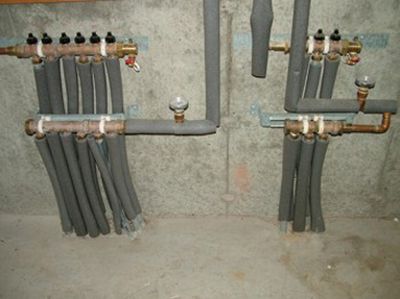Warm up to radiant floor heating

Dear Tim: I have a unique opportunity to convert to radiant floor heating in my home. A complete renovation is in progress, and I’m convinced radiant floor heating will be the best for me.
Is installing such a system a task the average homeowner can do successfully? What do I need to know to ensure my radiant floor heat system is installed correctly? Is one radiant floor heater better than the other? – Victoria B., Holderness, N.H.
Dear Victoria: Radiant floor heating is heavenly. The house I’m living in now is the first one I’ve ever had that has radiant floor heat. I’ve known its reputation for years as the most comfortable heating system, but never having experienced it, I couldn’t testify to its merits.
Well, now I can. I’m smitten with it. Once you’ve had a chance to live with it, you will not want to sacrifice it in any future homes.
Hot water radiant floor heat is an amazing system, regardless of whether your floors are wood or masonry. The floor itself, once heated, sends out low-level infrared rays through the air to heat your body and any other solid objects in the room. No heat is wasted in the air.
By comparison, forced-air heating systems are woefully inefficient. They warm the water vapor in the air and blow these molecules through the house; if the heated air hits you, you’ll get some warmth. It’s just not the same feeling.
One of the superb characteristics of radiant floor heating is the warmth of the floor; you can lie on it and be amazingly comfortable. Other floors are cold or uncomfortable. A floor that’s heated is a dream to walk on with bare feet or just in socks. You will not believe it until you try it.
Concrete slabs that contain the radiant-floor-heat piping become massive radiators. Once the concrete gets heated, the thermal mass radiates the heat into the room for hours. You can get the slab up to temperature and then turn back the thermostat. I’ve actually had my basement floor radiate bone-warming heat for up to 12 hours after the thermostat was turned back.
You should forget about installing radiant floor heat yourself. It’s an extremely complex task, requiring enormous skill and talent.
You want a seasoned installer who can prove to you he’s installed countless systems. The calculations, flow rates, Btu heat-loss calculations and engineering required to get a residential system to work flawlessly are difficult. Installing the actual equipment and piping is another skill set entirely.
Focus your energies on interviewing several pros; talk to past customers and decide which pro will do the best job for you. Going with the low bid in this situation could be an enormous mistake.
Radiant floor heat starts its life in a boiler. Modern radiant-floor heaters, or boilers, are highly efficient, and they are amazingly compact. You will be stunned at how small yours will probably be.
Don’t restrict your budget here. You want a superb boiler, so ask the different installers who makes the best one and why they feel that way. Invest time in searching for reviews on the Internet.
Water is heated in the boiler and sent into a piping system that recirculates the water through any number of interconnected loops. One of the magical things you can have with radiant floor heating is a system of individual zones. My current house has seven separate zones, each one controlled by its own thermostat. I can control the heat level in each zone.
A zone typically is a grouping of two or three rooms that are almost always connected to one another. For example, in my basement, a bedroom, large closet and a bathroom are on one zone. The other four rooms in the basement are on another zone.
The water is pumped to each zone by separate recirculating pumps. These workhorses are one of the few moving parts in a common radiant-floor-heating system. High-quality recirculating water pumps can last many years.
To make sure your radiant floor heating system is installed correctly, you need to ask lots of questions as you interview installers. Talk to them about how they do their calculations to ensure that there will be enough heat on the coldest winter days. Discuss which plastic radiant-heat piping will provide years of service.
Ask how the piping will be protected so it will never get punctured. Inquire about insulating concrete slabs so you don’t bleed heat to the outdoors. Many boiler manufacturers have good tips as well at their Web sites.
Make sure that your installer puts all his promises in writing in the contract. Take many photos of each step of the installation, especially those parts of the piping that will be covered and never seen again. Inspect the work to the best of your ability as you take the photos.
Make sure your installer gets a permit and that the inspector gives the job her/his seal of approval.